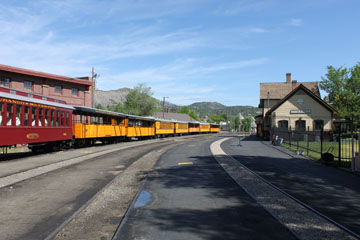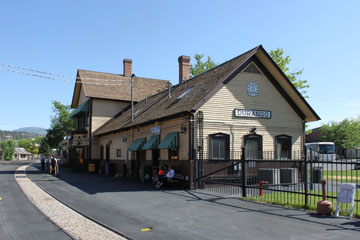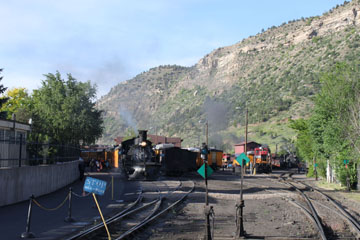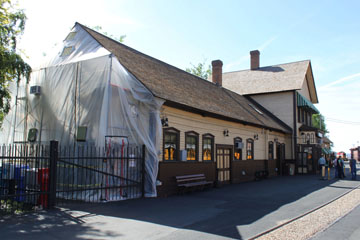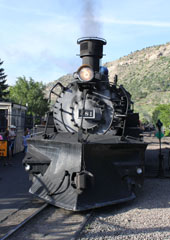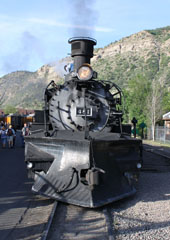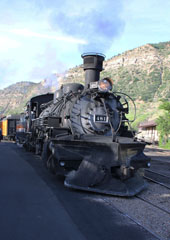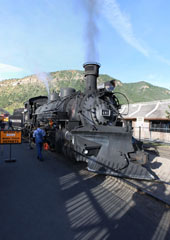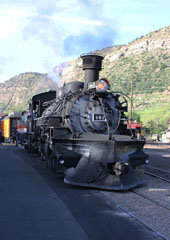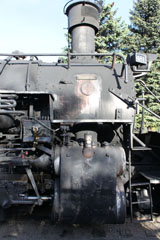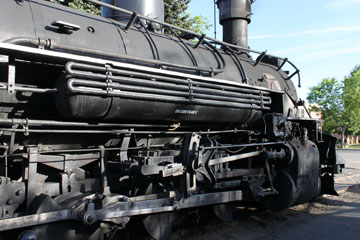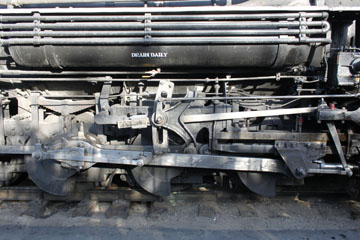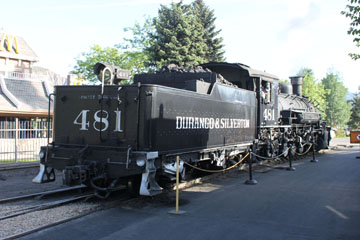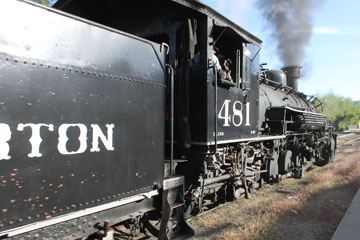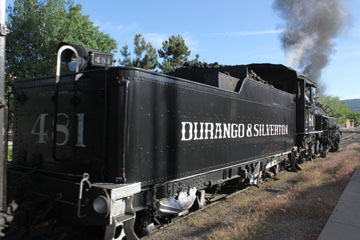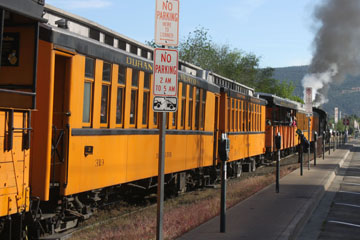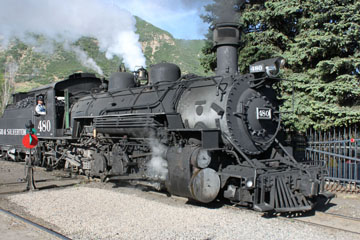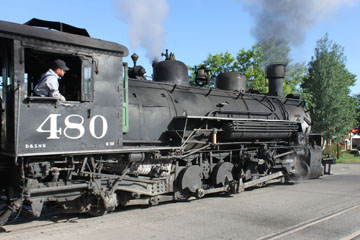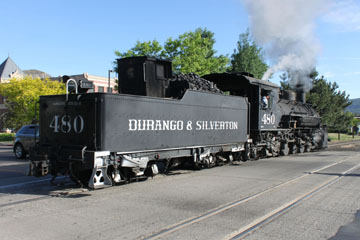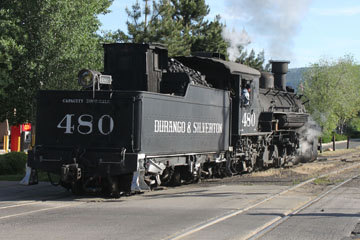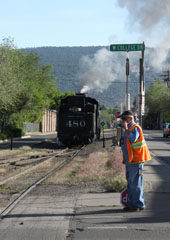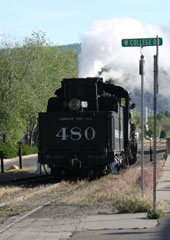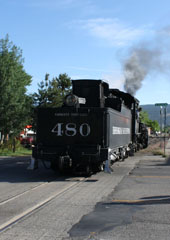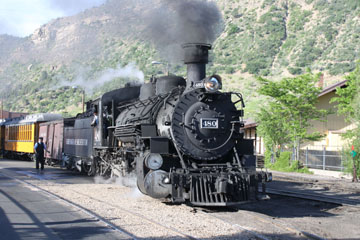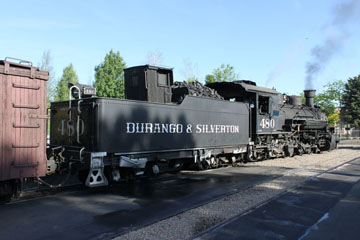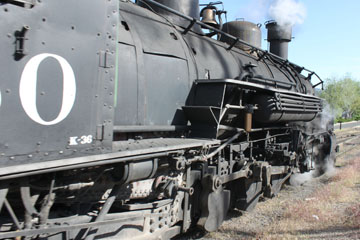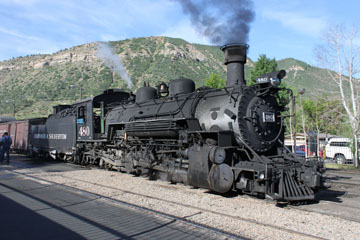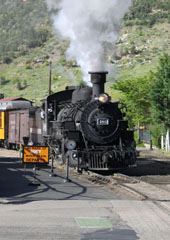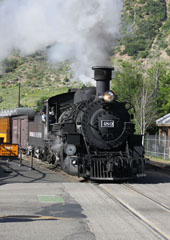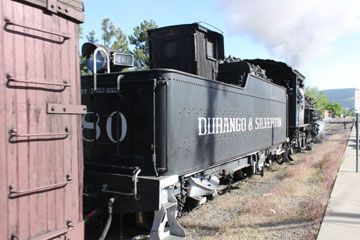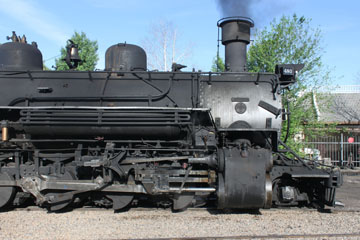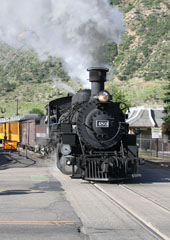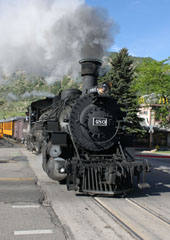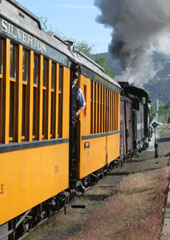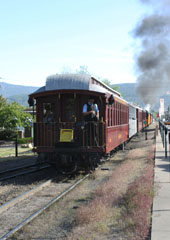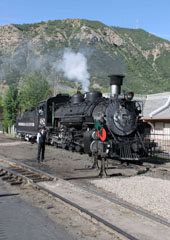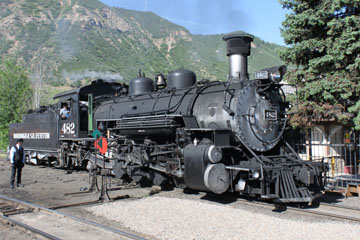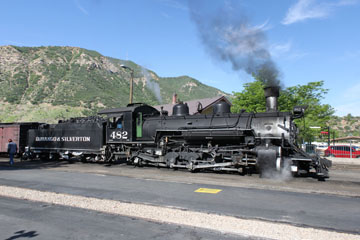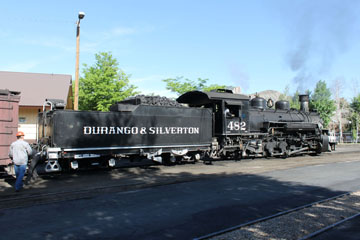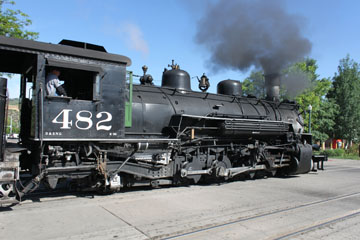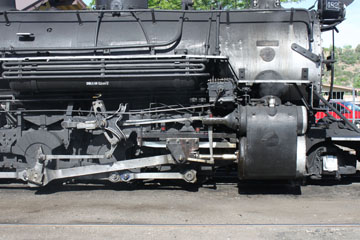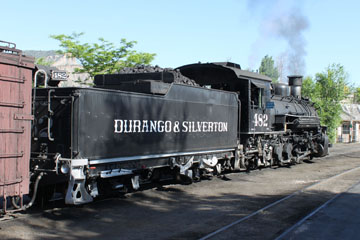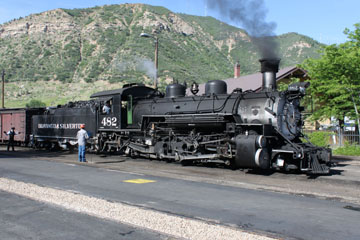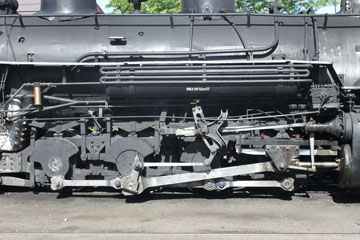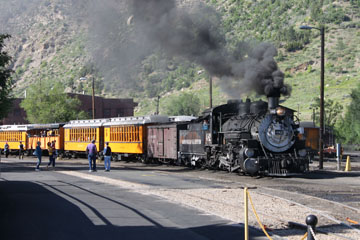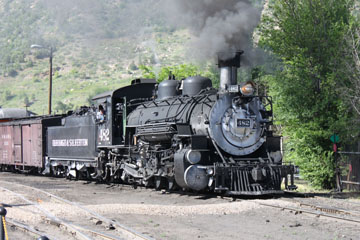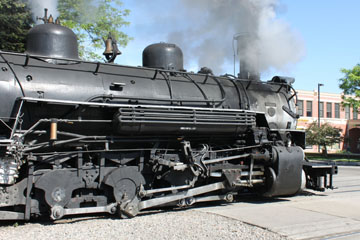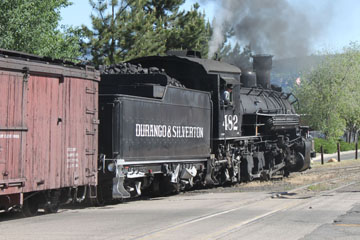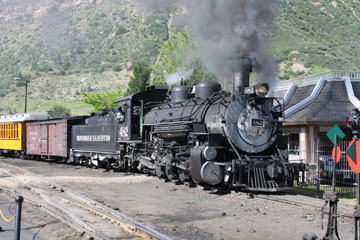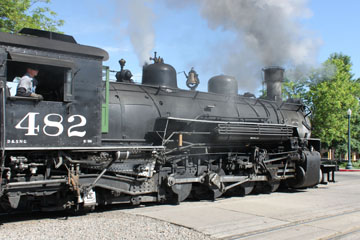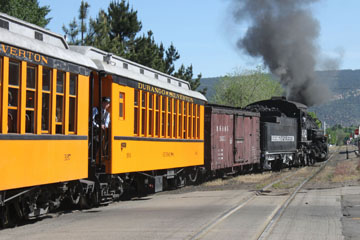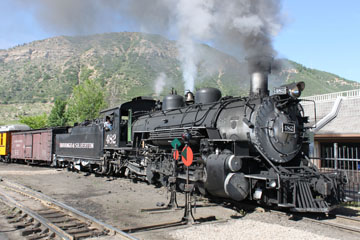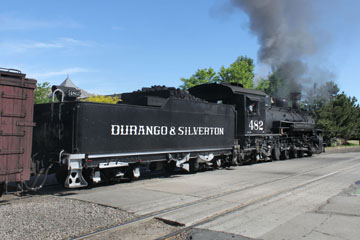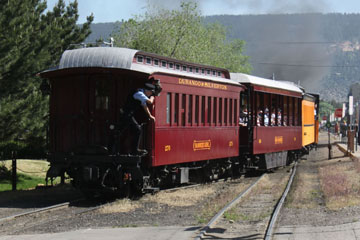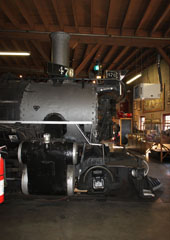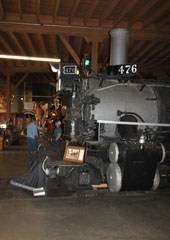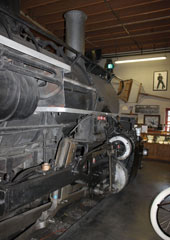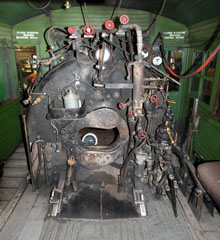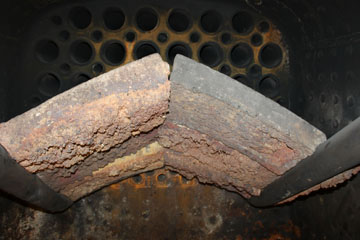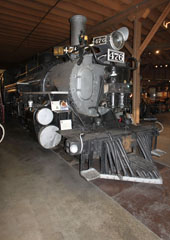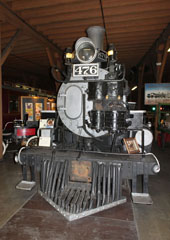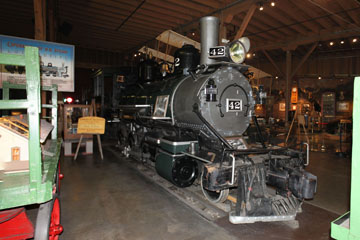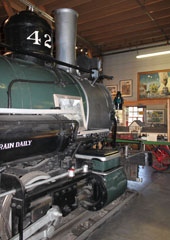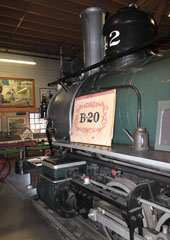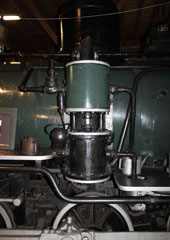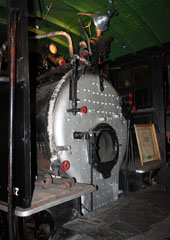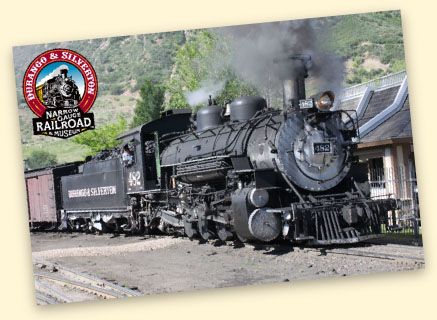

William Jackson Palmer, a former Civil War Union General, formulated a plan to build a narrow gauge railroad south from Denver, CO, to El Paso, TX. Work started in 1871 and, ten years later, the Denver & Rio Grande Railway arrived in Durango, CO. Finally, the line to Silverton, CO, was completed in mid 1882.
Over the years, the Silverton branch struggled with sagging revenue due to the declining mining industry, competition from highway trucking and limited passenger revenue. It was only after World War II that the railroad began to see a gradual increase in passenger traffic, bolstered by national exposure from Hollywood movies filmed along the line in the late 1940s and early 1950s. However, freight traffic continued to decline and, by the 1960s, the D&RGW no longer saw the Silverton Branch as worth maintaining and petitioned the Interstate Commerce Commission in 1961 to abandon the route.
The request was denied, however, due to the continued growth in tourist patronage. The D&RGW then invested in additional rolling stock, track maintenance and improvements to the Durango depot, but began to seek a purchaser for the line.
Above, the yard empties once the main traffic has left in the morning.
The last train to operate into Durango from the east was on 6th December 1968. In 1979, Charles Bradshaw, a Florida citrus grower, began negotiations to buy the rail line. Two years later, in March 1981, Bradshaw spent $2.2 million to acquire the forty-five mile Silverton branch and all of its structures and rolling stock. Bradshaw rebranded the line as the Durango & Silverton Narrow Gauge Railroad and immediately started working to grow the line's passenger base.
K-36 and K-37 class locomotives were restored to operating condition and operated to Silverton for the first time following improvements to the line. Vintage coaches were restored and new coaches were added to the roster. For the first time in many years, doubleheaded trains were employed to handle the growing passenger trade.
In 1997 Bradshaw sold the D&SNG to First American Railways, Inc., in Hollywood, FL. In 1998, the railroad was sold again to American Heritage Railways in Coral Gables, FL, which has since relocated to Durango.

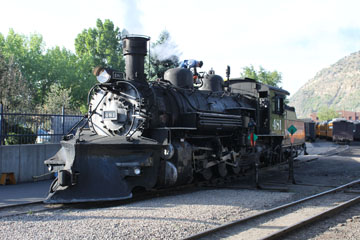
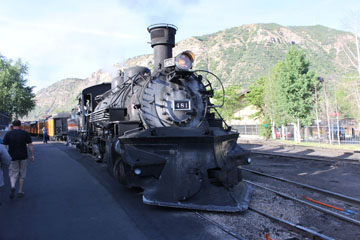
I spent the morning at Durango watching the three early departures for Silverton. First out was K-36 #481.
The ten K-36 Class Mikado (2-8-2) type
locomotives built by the Baldwin Locomotive Works in Philadelphia, PA, in 1925 (#480-#489) were the last narrow gauge locomotives built for the D&RGW and were used as freight-haulers throughout the system. The "36" stands for 36,200 lbs of tractive effort. #481 joined the Durango & Silverton in 1981 and completed its first run in August that year.
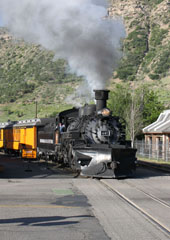
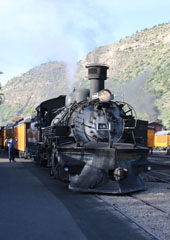
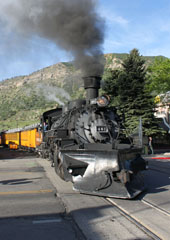
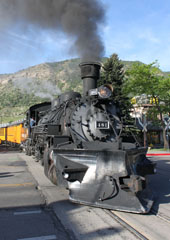
Above and right, #481 pulls out of the yard and heads towards Silverton.
The K-36 is 68' ¾" long and weighs 187,100 lbs, 143,850 lbs on its 44" drivers. The 40.2 sq ft grate is among the largest built for a narrow gauge locomotive. With a 145 sq ft firebox, total heating surface is 2,693 sq ft (including 575 sq ft superheating). It has Walschaert valve gear and
20" x 24" cylinders and, operating at a boiler pressure of 195 psi it delivers 36,164 lbs tractive effort. The tender weighs 98,500 lbs light with a 5,000 gallon water and 9½ ton coal capacity.

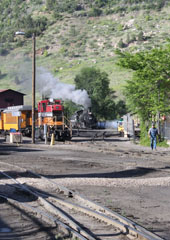
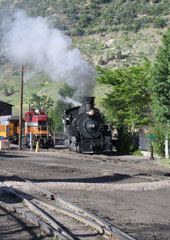
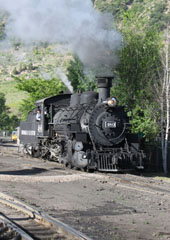
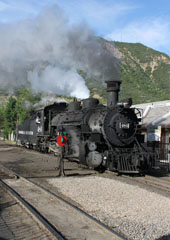
Next, above, coming out of the back of the yard is K-36 #480.
The locomotive was one of the ten of the class built in 1925. The K-36 primarily worked freight for the Rio Grande, and most of the movements on the railroad were freight rather than passenger. #480 was removed from service in 1964, was retired in 1970 and remained stored in Alamosa. It was transferred to the DSNGR in 1981 along with the rest of the equipment. It was completely rebuilt in the next four years and went back into service in July 1985.

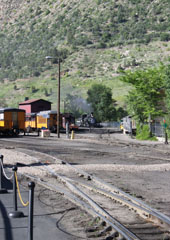
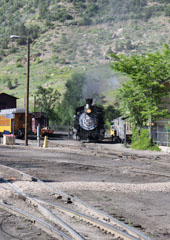
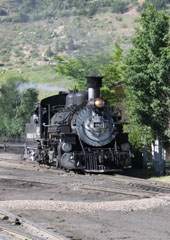
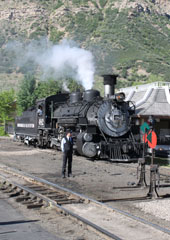
Above and right, K-36 #482 is last on the
road. Top left, the engine does a blowdown.
You can see three other surviving K-36 locomotives, #483, #484, #487 and #489 on the Cumbres & Toltec Scenic Railroad page of this website.

The tender weighs 98,500 lbs light and has a 5,000 gallon water and 8 ton coal capacity.
Only three K-28s have survived (#473, #476 & #478), and all are owned by the D&S. The other seven were requisitioned by the US Army in 1942 for use on the White Pass & Yukon Route in Alaska. After the war, they were scrapped. The three surviving engines worked on many parts of the D&RGW system. #476 and #478 saw service on the San Juan Express passenger train, which ran between Durango and Alamosa, CO, until 1951 when that service ceased.
The ten Class K-28 Mikado type (2-8-2) locomotives built at Alco’s Schenectady Locomotive Works, NY, in 1923 (#470-#479) were
designed for freight service along the D&RG. They also replaced Ten-Wheelers
hauling passenger trains on the Alamosa-Durango and Salida-Gunnison, CO,
services.
With a 28’ 10” engine wheelbase and 12’ 3” driver wheelbase, the engines weigh 156,000 lbs, 113,500 lbs on their 44” drivers. They have Walschaert valve gear and
18” x 22” cylinders. The grate is 30.1 sq ft, the firebox 102 sq ft and total heating surface is 1,996 sq ft including 396 sq ft superheating. Operating at a boiler pressure of 200 psi, they delivered 27,540 lbs tractive effort.

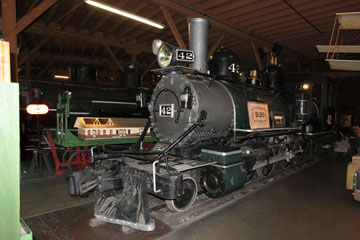
#42 was one of six Class B-4-70 Consolidation type (2-8-0) locomotives built by Burnham, Parry, Williams & Co., an early incarnation of the Baldwin Locomotive Works in Philadelphia, PA, in 1887 for the Rio Grande as #420. It was sold to the Rio Grande Southern in 1916. Renumbered #42, it worked until the railroad was dismantled in 1952.
#42 weighs 70,300 lbs, 62,150 on its 36” drivers. With Stephenson valve gear and 16” x 20” cylinders, it has an engine wheelbase of 18’ 7” and driver wheelbase of 11’ 9”. The grate is 14 sq ft, the firebox 87 sq ft and total heating surface is 1,019 sq ft. Operating at a boiler pressure of 130 psi, it delivered 15,716 lbs tractive effort. The tender weighed 53,00 lbs light with a 2,500 gallon oil and 6 ton coal capacity.
In 1953, the engine was sold to the Narrow Gauge Motel in Alamosa, CO. In 1958, it was bought by the Magic Mountain Amusement Park in Golden, CO, where it was converted to burn oil and operated for a short time. In 1969 it went on display in Monument, CO, in front of a bank. In 1971,it returned to Golden as a restaurant display at Heritage Square. Finally, in 1983, it was bought by the Durango & Silverton Railroad.


